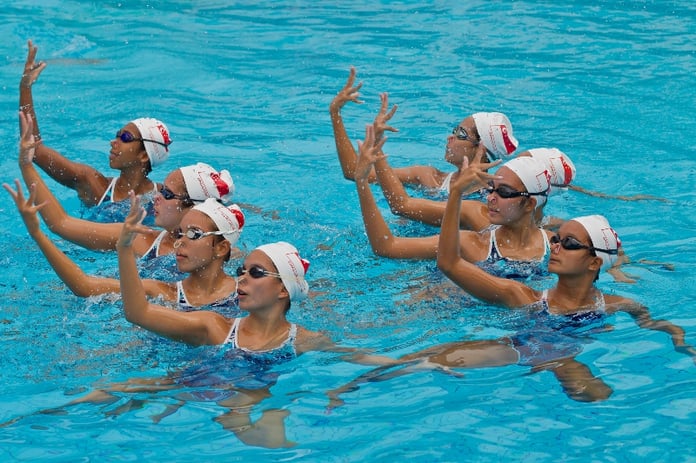What is Synchronised Swimming?

Image credit: Shaun Chiet/SportSG
Synchronised Swimming used to be known as 'water ballet'. This is because the routines are essentially a series of athletic movements choreographed to a piece of chosen music. Not unlike staged ballet, except that it is performed in the water.
Can you imagine having to hold your breath for minutes at a time while trying to look graceful and keeping in time to the music when carrying out a series of technical movements under water? And when you emerge to the surface you have to resist the urge to gulp down air, but instead hold a beautiful smile to make it appear as though the whole display is effortless.
Welcome to the world of Synchronised Swimming. Synchronised Swimming is highly challenging, requiring ease of movements and the ability to stay upside down in water. it is said to be as hard to practice as it is beautiful to watch. A test even for strong swimmers, the sport requires advanced water skills, strength, flexibility, endurance, grace, precise timing, artistry and exceptional breath control.
There are a variety of competitive categories in Synchronised Swimming: Solo, Duet, Trio, Team, Combination and Figures. Categories available to compete in the SEA Games include Duet and Team.
- Solos - Where an individual swimmer will synchronise with the music.
- Duets and Trios - Duets are when a swimmer coordinates with their partner and in time to the music, while trios are when a swimmer coordinates with two other swimmers in time to the music.
- Team - Where a swimmer coordinates with up to seven other athletes and in time to the music.
- Combinations - A team routine where up to ten swimmers perform in one continuous routine but during the routine, there will be segments where a differing number of swimmers will perform.
Currently, only the duet and team competitions are included in the Olympic Games. In most senior competitions, swimmers will perform two routines for a panel of ten judges, one technical and one free. The technical routine involves performing predetermined movements or elements that must be executed in a specific order. The free routine has no requirements so the swimmers can be as creative as they like with their movements and choreography.
Synchronised Swimming has been dominated by women because the Olympic and World Championships are not open to men. However, there are other world competitions like the EuroGames, where men are able to participate.
To receive the latest updates on the happenings in the Singapore sports scene, or to find out more about some of the latest programmes on offer at ActiveSG, like our Facebook page here.



